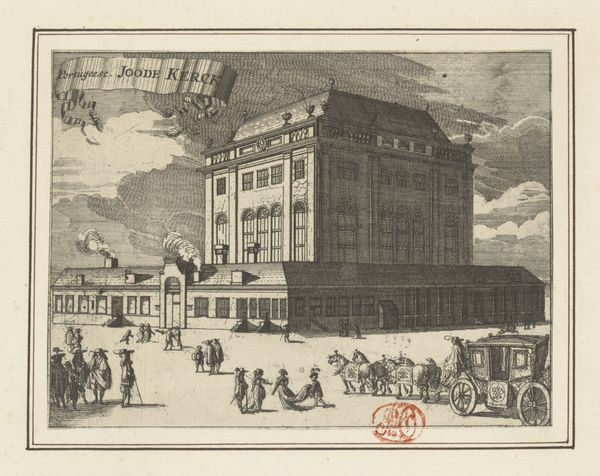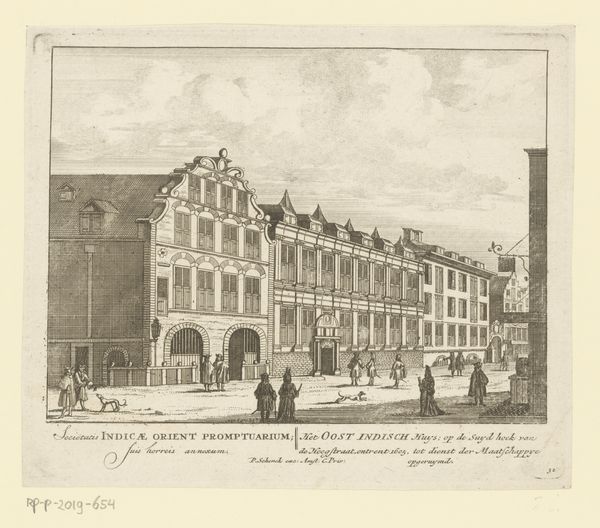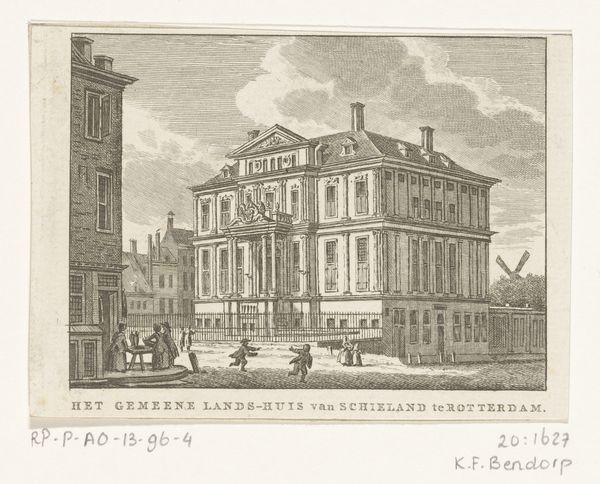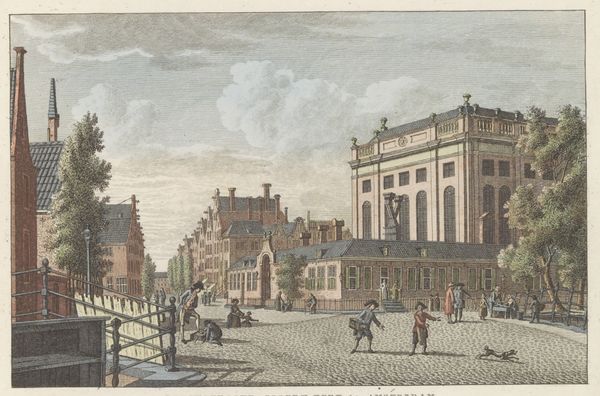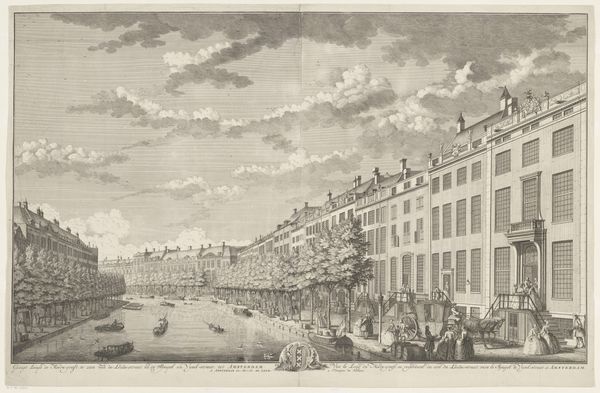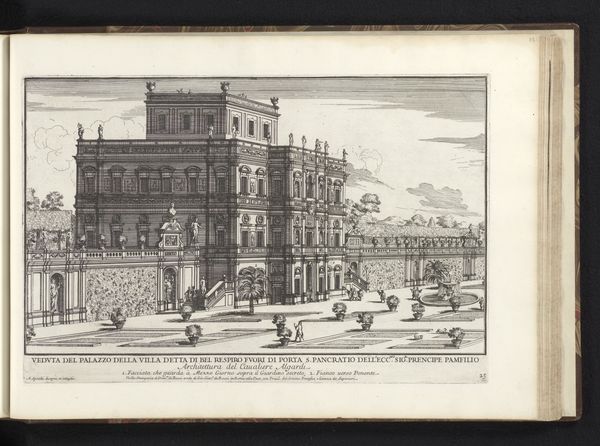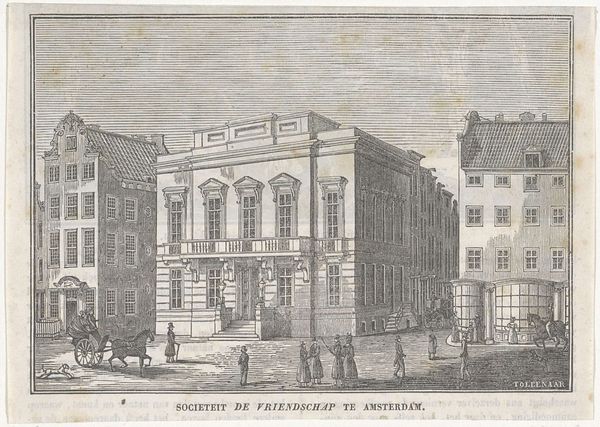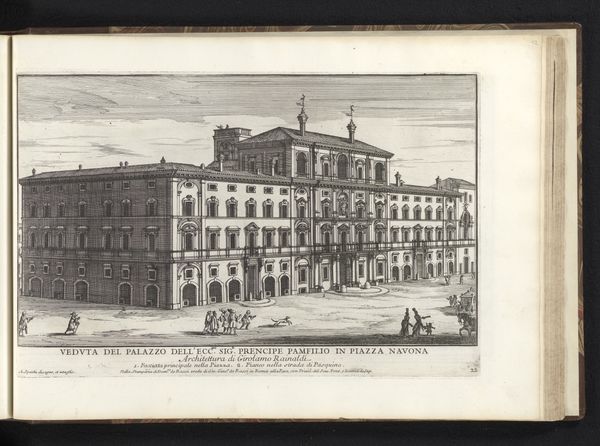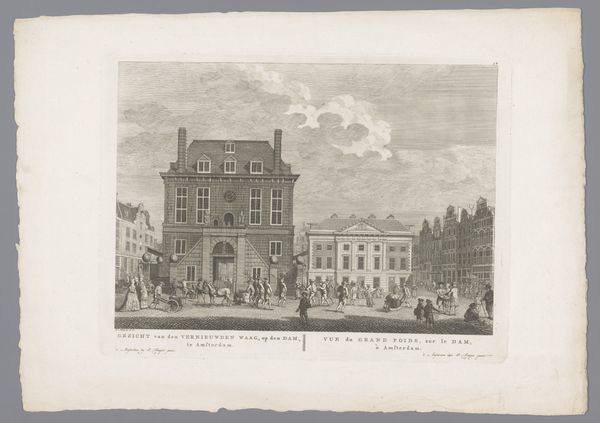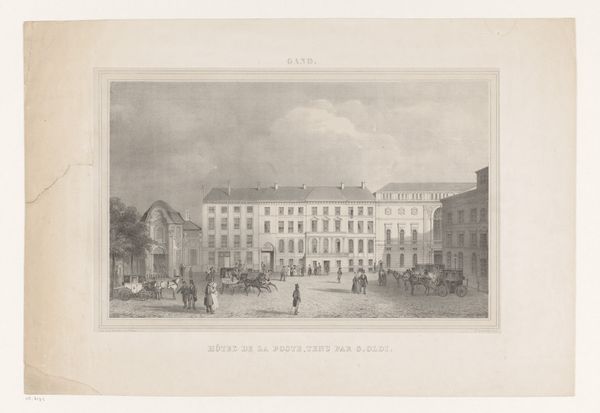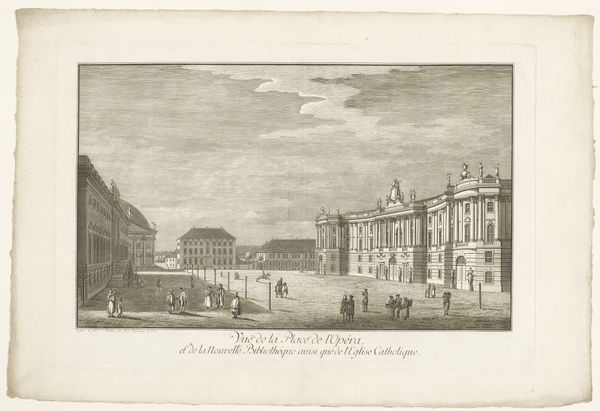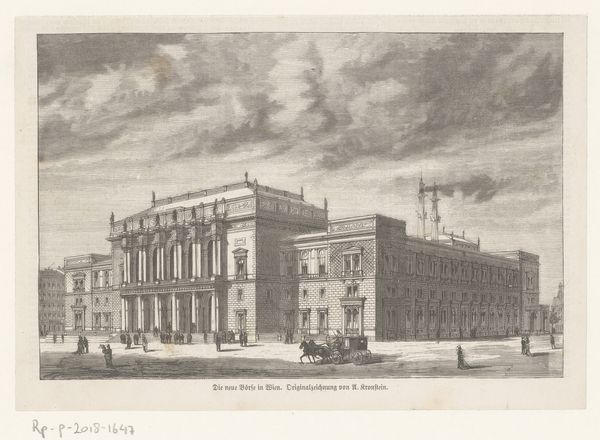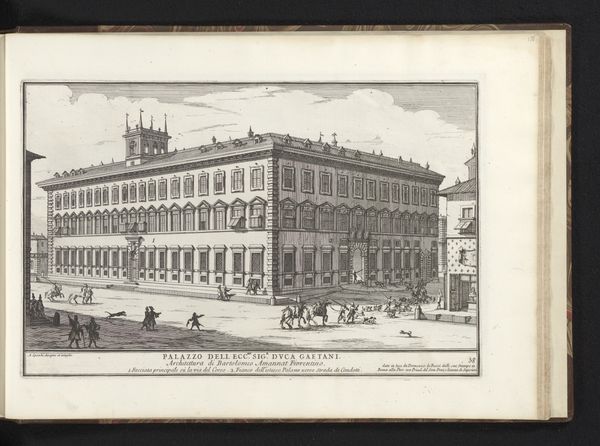
print, etching, engraving
baroque
dutch-golden-age
etching
cityscape
engraving
Dimensions: height 134 mm, width 174 mm
Copyright: Rijks Museum: Open Domain
Curator: Here we have an etching, an engraving to be exact. This is “Gezicht op de Portugese Synagoge te Amsterdam,” or View of the Portuguese Synagogue in Amsterdam. It’s attributed to an anonymous artist, dating from sometime between 1713 and 1751, during the Dutch Golden Age. Editor: It feels so orderly, so composed. There’s a real sense of spaciousness in the public square before the synagogue; everyone is carefully positioned—carriages, people strolling, even a dog makes an appearance. It feels a little...staged. Curator: That’s very astute. This meticulous quality speaks to the political and social function of cityscapes at the time. This image shows the synagogue as an integral part of Amsterdam's urban fabric, doesn't it? Note the contrast with the neighboring buildings. The houses are connected, the synagogue standing as a separated element. It seems so intent on portraying a harmonious urban landscape. Editor: That's what strikes me, it is also promoting Amsterdam’s tolerance, perhaps? The depiction seems carefully crafted to integrate and normalize the Jewish community's presence, in that frame and beyond. The monumental structure, yet set amongst day-to-day activity, is meant to show a lived-in integration. The placement and position would need to be deliberate choices, wouldn’t they? Curator: Exactly. The printing press facilitated a much broader circulation of these images. They weren't just documents, they helped solidify the self-image of Amsterdam as a cosmopolitan center, progressive in its religious views. That explains the prominence given to the synagogue in the frame, making it a visual emblem of the city’s supposedly tolerant policies. It does not only depict Amsterdam as it was, it crafts a symbolic statement about what the city aspired to be. Editor: Considering its creation, I now see that there's something performative about the whole image. I now feel it's less documentary and more an idealized representation with calculated intention. Curator: Exactly! Considering the social and political climates then, an etching like this could carry as much weight as modern urban marketing. That image could challenge perceptions about social groups as much as building designs. Editor: It certainly provides us much to ponder in viewing history through artistry, wouldn’t you say?
Comments
No comments
Be the first to comment and join the conversation on the ultimate creative platform.
